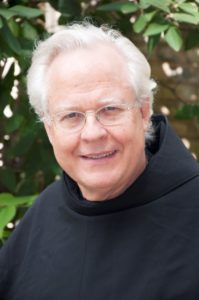 From Newman as a Critic of Modernity
From Newman as a Critic of Modernity
To Vatican II as Newman’s Council
“The world is content with setting right the surface of things;
the Church aims at regenerating the very depth of the heart.”
In the 21st century, does this aphorism[1] have traction or purchase, or attract anyone? Does it appear that the world is content at setting right the surface of things? John Locke defined how to be a good citizen and how to avoid religious wars by all religions keeping to very few beliefs. The less belief, the better for civil harmony. To some, that looks good for setting right the surface of things. Self-proclaimed referees, operating under the guise of neutrality, make the claim to set right the surface of things. The increasing breakdown of civility and overwhelming absence of nobility inundates us every time we turn on the news or look at our cellphones.
Are we convinced that what the Church is and what it does directly concerns the regeneration of the very depth of the heart? Edward Gibbon, a gifted historian, wrote that the Church was an authoritarian institution with too many rules, with the ability to be heavy handed so as to force its doctrines upon the faithful. John Henry Newman grew up with the prevailing Lockean and Gibbonesque thought in England. Newman’s aphorism from The Idea of a University tells a story. Christianity has a story to tell about what the Church’s mission is and what it has done or failed to do on the world stage for two millennia. We inherit this story.
What is the prevailing current today? Do we still live in the aspiration of the Kingdom of God? Has the real meaning of the sacramental been drained? Newman was dealing with a variety of ways to defend the reasonableness of belief in God and to allow the inclusion of the sacraments in the economy of Christianity. He drew attention to the phenomenon of Christian thought in the 19th century that was embedded in its practices and forms of life. My sketches have ranged from his teen to his golden years. A reflection upon the phenomenon of Christian thought from different periods in his life and the works he produced at those times offers a perspective to unite the ‘Anglican’ and ‘Catholic’ Newman and his writings.
Newman as Anglican and Catholic stands with a contemporary of his: Kierkegaard, a Lutheran who grasped well the all too easily changing nature of secular Christianity in modernity in Denmark between the 1830s and 1850s. A point by point comparison of the two thinkers would be very fruitful, despite Kierkegaard’s very different 19th century cultural situation. Kierkegaard is an instance of a particular ‘prophetic’ type of apologist who “is less interested in defending Christianity against the atheists than critiquing its self-preservation in modernity in which it makes its peace with reason, morality and with progress” (C. O’Regan). Kierkegaard is scathing in his criticism of the Lutheran bishops for their failure to stem the tide of adaptation to modern cultural and social norms in Denmark that have displaced authentic Christianity which, for Kierkegaard, is essentially Lutheran Christianity. Kierkegaard’s critique is ‘prophetic’ in substance and tone for its failure to bear any resemblance to the Lutheranism of the past.
Kierkegaard’s patterns present similarity and difference with Newman. For Kierkegaard, faith rather than reason, scripture rather than cultural accommodation that weakens a strong sense of sin and sinfulness, and knowledge of how the sinner has a sense of the transcendent Otherness of God and deep sense of the prerogatives of divine judgment that is not subservient to secular morality, confirms the mystery of the incarnation, passion and death of Christ. His prophetic critique of the degraded state of Christianity in modernity and his prophetic tone is unique and is as vehement as the biblical prophets, Hosea and Jeremiah. Newman believes in the power of argument and uplifts Christian believers with the skills of the scalpel of argument.[2]
Look to Vatican II, Newman’s Council. Lumen Gentium defines the mystery of the Church, not a common garden word. The source of the Church, its energy, power, and reality as an instrument as an institution is a mystery. The Greek mysterion means power and source. The Latin term is sacramentum. The Church is a vehicle of a symbol that stands for a reality that transcends it. The Church is nothing without representing Christ. It is the vehicle whereby Christ is made present and lives in our presence. God is in and with the Church, and is the vital principle within the Church. Christ is in the sacrament, and is present in the Church. The Church as an institution, animated by the Holy Spirit, has to be representative of Christ. The Church as mystery is alive, vital and not reduced to an institution with power locked behind walls.
A second Vatican II document on the Church and what it does in the world as a gift, Gaudium et Spes (Joy and Hope) lyrically draws us into what the Church is doing as the Church of the poor, the outsider, with an eye on eternal life. Newman’s Council has a shift in tonality from Vatican I. Christ lives in our presence now. God is in and with and is the vital principle within the Church. As an institution, the Church Is representative of Christ and animated by the Holy Spirit. The Church’s mission includes dialogue and encounter and recognition of human dignity. Human beings are made in the image of God, gifted with reason and freedom. Every person, most of all, persons with disabilities, reflect who we are as images of God.
The defining feature of Newman’s work is what he calls liberalism in religion. His account of its basic tenets and underlying principles is a vista that invites deeper study of Newman and how he goes beyond doctrine and tradition, encouraging a perception of greatness in the human being that may have been lost from view of historical Christianity but retrieved with Vatican II. Locke and his epigones, R. Whately at Oxford, and E. Gibbon with his historicist line, attempted to remove any belief in mystery. In our own day, two lines of interpretation of Newman’s Council often appear in competition in the Church’s ongoing updating, the competing interpretations which themselves risk obscuring the mystery. Pope St. John XXIII’s call to update the Church, is not a call to leave its identity behind, nor to be invidious or condemnatory. Social justice as the only purpose of the Church is a wrong interpretive strategy, but it continues to dominate.
Fr. Edward J. Ondrako, OFM Conv., Univ. of Notre Dame, Easter Reflection 3 eondrako@alumni.nd.edu
__________________________________
[1] J. H. Newman, The Idea of a University (London, uniform edition), 203.
[2] See my earlier entries referencing Newman’s Oxford University Sermons and A Grammar of Assent. Newman never reduces argument to logic or syllogism or a version of biblical proof texting.
Fr. Edward J. Ondrako, OFM Conventual
Research Fellow Pontifical Faculty of St. Bonaventure, Rome
Visiting Scholar, McGrath Institute for Church Life
University of Notre Dame
May 10, 2022
